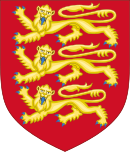
Back Civil parish Afrikaans أبرشية مدنية Arabic ابرشيه مدنيه ARZ İcma (İngiltərə) Azerbaijani Parrezioù keodedel Bro-Saoz Breton Civilní farnost Czech Plwyf sifil Welsh Civil Parish German Parroquia civil (Inglaterra) Spanish Parrokia zibil (Ingalaterra) Basque
| Civil parish (England) | |
|---|---|
 Map of English civil parishes and Welsh communities | |
| Category | Parish |
| Location | England |
| Found in | Districts |
| Created by | Various, see text |
| Created |
|
| Number | 10,464 (as of 2023[1]) |
| Possible types |
|
| Populations | 0–137,387 (Northampton) |
| Government | |
| This article is part of a series within the Politics of the United Kingdom on the |
 |
|---|
In England, a civil parish is a type of administrative parish used for local government. It is a territorial designation which is the lowest tier of local government.[2] Civil parishes can trace their origin to the ancient system of parishes, which for centuries were the principal unit of secular and religious administration in most of England and Wales. Civil and religious parishes were formally split into two types in the 19th century and are now entirely separate. Civil parishes in their modern form came into being through the Local Government Act 1894 (56 & 57 Vict. c. 73), which established elected parish councils to take on the secular functions of the parish vestry.
A civil parish can range in size from a sparsely populated rural area with fewer than a hundred inhabitants, to a large town with a population in excess of 100,000. This scope is similar to that of municipalities in continental Europe, such as the communes of France. However, unlike their continental European counterparts, parish councils are not principal authorities, and in most cases have a relatively minor role in local government.[3]
As of September 2023[update], there are 10,464 parishes in England,[1] and in 2020 they covered approximately 40% of the English population.[4] For historical reasons, civil parishes predominantly cover rural areas and smaller urban areas, with most larger urban areas being wholly or partly unparished; but since 1997 it has been possible for civil parishes to be created within unparished areas if demanded by local residents. In 2007 the right to create civil parishes was extended to London boroughs,[5] although only one, Queen's Park, has so far been created.[6]
Eight parishes also have city status (a status granted by the monarch). A civil parish may be equally known as and confirmed as a town, village, neighbourhood or community by resolution of its parish council, a right not conferred on other units of English local government. The governing body of a civil parish is usually an elected parish council (which can decide to call itself a town, village, community or neighbourhood council, or a city council if the parish has city status). Alternatively, in parishes with small populations (typically fewer than 150 electors) governance may be by a parish meeting which all electors may attend; alternatively, parishes with small populations may be grouped with one or more neighbours under a common parish council.
Wales was also divided into civil parishes until 1974, when they were replaced by communities, which are similar to English parishes in the way they operate. Civil parishes in Scotland were abolished for local government purposes by the Local Government (Scotland) Act 1929; the Scottish equivalent of English civil parishes are the community council areas established by the Local Government (Scotland) Act 1973, which have fewer powers than their English and Welsh counterparts. There are no equivalent units in Northern Ireland.
- ^ a b "Dataset: Civil parish". Office for National Statistics. 10 September 2023.
- ^ "A Beginners Guide to UK Geography (2023)". Open Geography Portal. Office for National Statistics. 24 August 2023. Retrieved 9 December 2023.
Parishes are subdivisions of local authorities in many parts of England, and their councils are the most local level of government. Unlike electoral wards and electoral divisions, parishes are not found in all parts of England. The Welsh and Scottish equivalents are communities. Note that the full term for administrative parishes is "civil parish", to distinguish them from the ecclesiastical parishes that are found in all parts of the UK.
- ^ Barnett, Neil; Sweeting, David (2013). "Is UK local government really so big?" (PDF). University of Bristol. Retrieved 20 July 2022.
- ^ Baker, Carl; Sandford, Mark (16 December 2020). "Unitary authorities: The role of parish and town councils". House of Commons Library. Retrieved 8 March 2023.
- ^ Guidance on Community Governance Reviews (PDF). London: Department for Communities and Local Government. 2010. ISBN 978-1-4098-2421-3.
- ^ "Queen's Park parish gets go-ahead". BBC News. 29 May 2012.